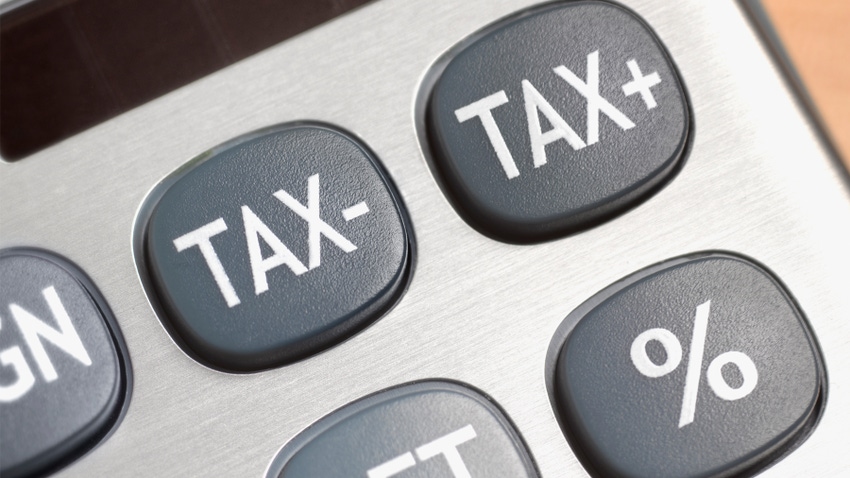April 21, 2023

Last month, I had the opportunity to travel to Washington, D.C., to attend a conference and visit some our state legislators. One of the things I learned from the seminar and from our representatives is that the likelihood of major tax reform being passed is fairly low until at least after the next election cycle in 2024.
As a country, and congressionally, we are still divided on many issues. That has been obvious for some time. If that close division remains the case after the election cycle, then reform or extending current favorable tax cut provisions is less likely. So, how can we turn this division into a positive planning opportunity?
Many of you have heard talk about the sunset of the Tax Cuts and Jobs Act of 2017, set to happen on Dec. 31, 2025. Sometimes referred to as the “Trump tax cuts,” these provisions were the last major piece of tax reform we have seen in several years. With this sunsetting (or expiration), several tax provisions, including income tax cuts, capital gains rates cuts, and estate and gift tax exemption hikes, will expire without congressional and presidential intervention. The laws will revert to rates in place prior to passage of the legislation. Thus, the next two to three years are a prime time to take advantage of a lower tax rate environment.
Plan ahead
While it may seem that the election is already looming over us with lawmakers and other individuals announcing their candidacy for public office, I look at this time as a time to plan. April 18 marked the end of “tax season” for preparers and accountants. As you finish up planting and enter the summer months, utilize that time to plan. Meet with your tax preparer and brainstorm your tax plan for at least 2023 and 2024 — maybe even 2025. One thing is certain in an uncertain time: We have an opportunity to lay out a solid tax plan for a few years, and every farm family should try to leverage that opportunity while they can and discuss those issues with their advisers (legal, tax and financial).
Those that have a larger estate or net worth — or consistently high income — may also want to think about gifting opportunities in the next few years if they have the ability to do so. One thing I would remind all farm families in Iowa is to become acquainted with new Iowa tax benefits for retired farmers, including the retirement income tax exemption and farm-lease income exclusion. There is a great article published by Iowa State University’s College of Agricultural Law and Taxation at calt.iastate.edu on these topics.
What is a Section 1031 Exchange, and how do these exchanges work? I recently received a reader question asking for more information on 1031 exchanges, and why one would take advantage of an exchange opportunity. One way to defer a capital gains hit is to enter into a Section 1031 Exchange. The ability to complete a Section 1031 Exchange is sometimes discussed when major tax reform is being debated. So far, these exchanges have stood the test of time.
This question made me think about all the transitioning of land that is happening and will continue to happen as the baby boomer generation retires. As our urban and suburban areas grow, more farmers have found themselves in need of utilizing this tax deferral tool. In my law practice, I have had the regular occasion to walk clients through exchange transactions. In these instances, I have found like-kind exchanges to be an exceptionally valuable tool for farmers and landowners.
A little bit of background — Section 1031 allows for the deferral of gain on the sale of investment and business-use assets as long as a new replacement asset is acquired. It is most used by landowners and farmers to trade land and agricultural equipment. Section 1031 has been a part of the tax code for nearly 100 years, having first been enacted in 1921. Congress has traditionally recognized that Section 1031 promotes efficient use of capital by allowing for the exchange of otherwise illiquid assets, such as land and equipment, without being forced to use after-tax dollars to make upgrades. Stated another way, the rationale has stood that as long as a taxpayer continues to invest and keep dollars working in the economy, no cash exists to pay the tax.
A taxpayer is allowed to retain equity without losing funds to the government each time the taxpayer makes a reallocation. The consequence of not having Section 1031 as a safety valve is that owners of investment assets would either not sell — or delay making upgrades — for fear of paying the tax. In the end, Section 1031 removes the scenario of being “tax-locked.”
There are several requirements and regulations to follow when looking into a 1031 exchange. Thus, you will need to work with your attorney, tax preparer and a qualified intermediary if you want to successfully tax advantage of this opportunity.
Herbold-Swalwell is with Parker & Geadelmann PLLC. Email her at [email protected].
About the Author(s)
You May Also Like






